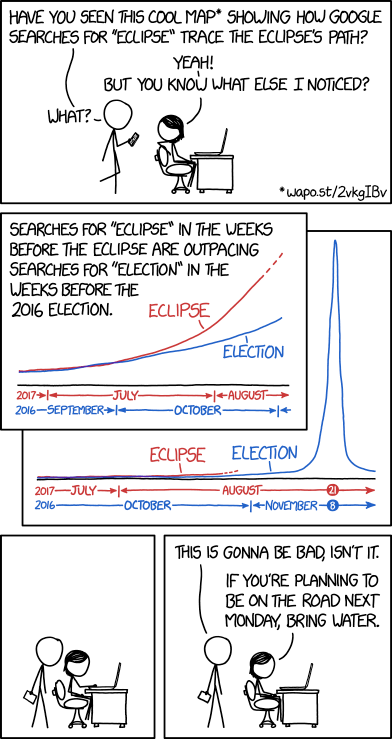In the 21st century, we have 67 total eclipses (
list), or 5.6 per calendar month on average.
Jan: 5 <- perihelion Jan 3
Feb: 0
Mar: 6
Apr: 7
May: 7
Jun: 3
Jul: 6 <- aphelion Jul 4
Aug: 12
Sep: 8
Oct: 1
Nov: 3
Dec: 9
The Moon has to cross the ecliptic at the same time as new moon for an eclipse, this leads to about two "eclipse seasons" per year. They shift around over time, however, with a period of 18.6 years, or -20 days shift per year. This year it is in late February/August, next year in early February and July/August, in 2019 in early January/July and then late December, 2020 in June/December and so on. Typically we get one solar eclipse and one or two lunar eclipses per season, in rare cases we get two solar eclipses, but then they are both partial, and only visible from far north/south, respectively.
Overall this leads to a roughly uniform distribution of eclipses, with a small bias towards the summer for total eclipses where the Sun appears smaller today, and a small bias towards the winter for partial eclipses. The position of the perihelion relative to the seasons has a period of ~23,000 years, or just 1.5 days per century, too small to be notable over a human lifetime.
By the way: If you want to be as close to the Sun as possible, 2020 is your opportunity. Kilimanjaro or maybe some place in the Indian ocean, 5th of January around 8 am GMT. The
closest perihelion this century.
If you want to be as far away as possible: 4th of July 2019, around 8 am GMT, probably somewhere south-east of Hawaii.


